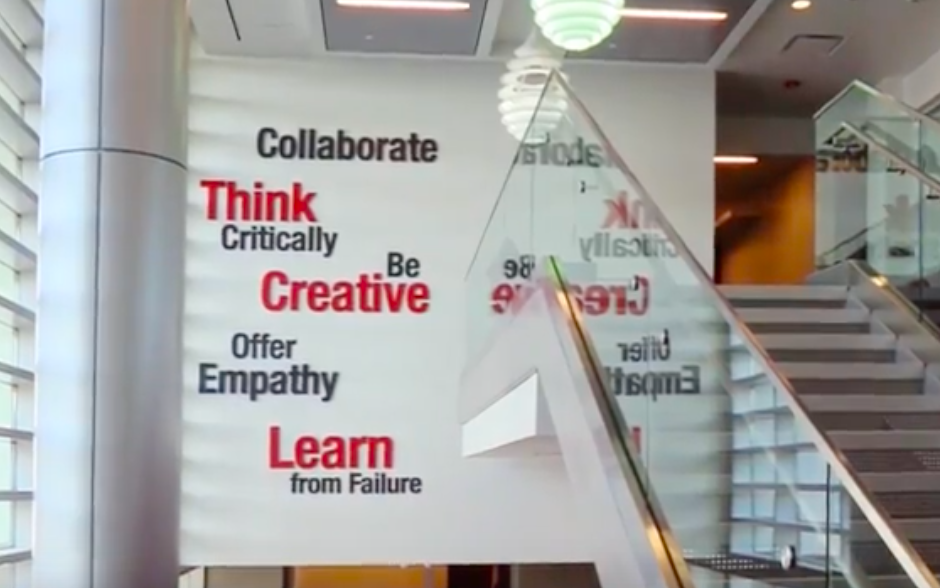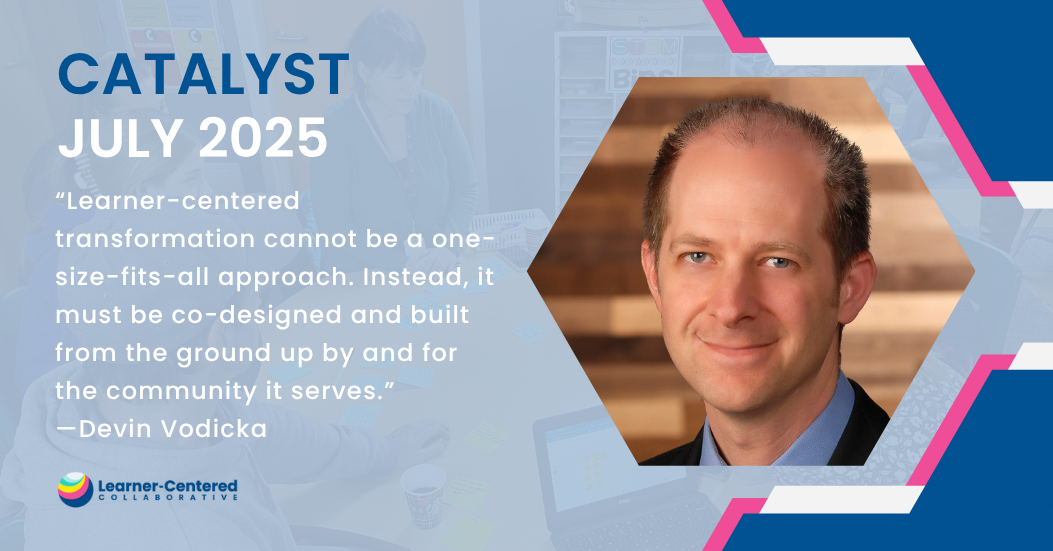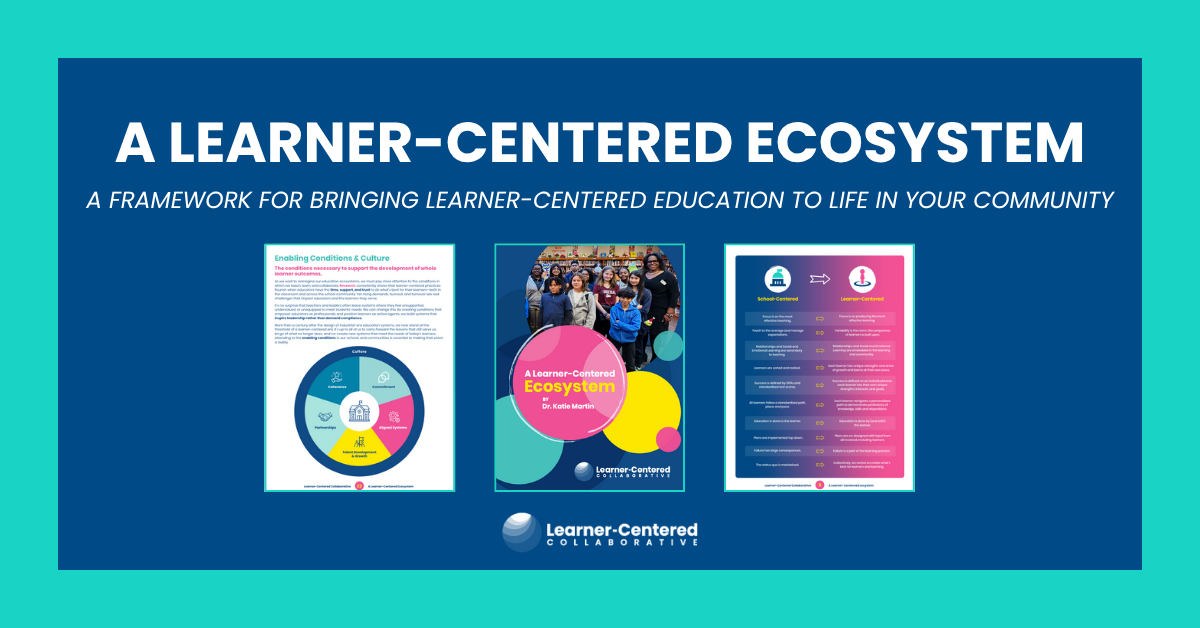A Question of Trust: The Arcadia Unified Better Together Project
By Alan J. Daly, Katie Martin, Nicolette Van Halem, David Vannasdall, Devin Vodicka
(Authors listed in alpha order by last name and all contributed equally to the piece)

Arcadia Unified School District Superintendent, David Vannasdall, was visiting classrooms and noticed that every student in a kindergarten classroom had produced the exact same piece of artwork. It struck him in that moment how the learning experiences in many cases were at odds with the aspirations that they shared as a community. They had gone through a multi-stage process to identify their core values which embodied a sense of creativity and innovation: Imagine, Inquire, Inspire and yet this example underscored the need to do more.
Arcadia Unified is widely recognized as one of the most successful K-12 systems as their students have 100% graduation and are successful by many metrics. Even so, their leaders also know that as the world continues to evolve the system and expectations in which education takes place must equally evolve and continue developing learners that thrive in an unpredictable world. During that walkthrough it became apparent how despite their vision, the systems set in place were anchored in standardization through existing practices and approaches. Moving forward would require more than a new vision.
This contrast between aspiration and reality plays itself out in classrooms, schools, and communities across the United States everyday. This is the story of how Arcadia Unified engaged in a research-practice partnership with Altitude Learning (now Learner-Centered Collaborative), and the University of California San Diego as they sought to better understand and rigorously examine key levers for transformational change. The journey begins on a shift away from a “one size fits all” model of the industrial era to a learner-centered model that is grounded in values and purpose. This journey and partnership continues to evolve, deepen, and point to promising new ways of engagement. Even as we grow, the experiences from the early stages of the process in Arcadia have generated tremendous insights that are particularly relevant now as we are confronted with an unprecedented need to rapidly shift in response to COVID-19. The pandemic has further exposed the pressing need that our educational system must change if we are serious about equity and meeting the needs of each and every learner.
“Better Together” is a research-practice partnership comprising the Arcadia Unified School District, a research partner (UCSD), and weaves in a critical intermediary organization (Altitude Learning) as collaborators. All come together with the idea that relationships and culture are key elements which must be attended to in creating transformational change. At the center of this idea is that the people in the system and particularly the leaders are core levers of change and therefore attending to the culture and climate in which they do their work is of primary importance. Within Better Together we aim to develop a deeper understanding of successful change efforts towards learner-centered education and the role of culture and climate all with a focus on equity.
What did we learn?
We gathered data around agency and culture in the Winter and Spring of 2019 and 2020 from 11 K-12 schools in the Arcadia Unified School District. Data came from a total of 42 school leaders, 371 teachers, 1622 students, 409 parents, and 174 classified staff reflecting close to a 70% response rate. Seven stakeholder groups were invited for the survey round, interviews with different stakeholder groups are ongoing, as well as observations and social network analysis.
Through the survey, we gathered a variety of climate variables from all stakeholders including: students, teachers, parents, classified staff, principals, and central office administrators. We worked with the district leaders to identify important ingredients of student’s school experiences within the district and defined the following culture variables accordingly:
- Student perceptions of the culture and climate about the school
- Student sense of belonging
- Student perceptions of safety
- Student trust in their educators (including teachers and principals)
- Student voice and choice in their learning
- Student perceptions of the relevance and contextualization of schoolwork
- Student perceptions of interactions with their teachers
- Student perceptions of interactions with their peers
- Student perceptions of the usefulness of mobile devices for learning

The central question that we aimed to answer is: Out of all the areas we measured, what are the highest leverage points in realizing student-centered learning for the district? We applied a new set of approaches on this data to support district and site decision making on improvement efforts (see graph below). This new method produces a data-based ranking of the areas in terms of their positive effects on all other areas. Overall, it appears that students’ trust in their educators (principal and teacher trust) has the highest average association with all areas that together make up the student’s school experience.
Parallel to the findings in the student survey data, the results show that principal trust has the highest overall association with areas that together make up the teacher’s daily experiences in their work, including collaboration between teachers, communication with parents, instructional practices, and equity beliefs.
Increases in student’s perception of their trust with leaders are associated with an average increase of 15% in all eight other areas that make up a student’s school experience. In comparison, increases in safety as identified what leaders might think are most impactful are only associated with an average increase of 5% in all eight other areas. This makes the point that while leaders have good insights as to areas to focus on, the Better Together research-practice partnership resulted in an additional gain that would not have been realized without the partnership work. This research-practice partnership is successful because of the trust between partners and the fact the efforts are grounded in valid and reliable instruments and cutting-edge methods. The bottom line of the work is the importance of trust both within the partnership, but also across levels in the organization for realizing the district’s mission and core values.

Once trust was identified as a key element in transformational change, leadership renewed their focus on the importance of the quality of relationships and their core values and the results have been impressive. As is evident in the graph below, the levels of trust from 2019 to 2020 have grown in statistically significant ways. So how was all of this accomplished?

Four Key Areas of Transformation
As a result of the Better Together research-practice partnership, we identified 4 key elements of Learner-centered innovation with a focus on equity and they all revolve around a culture of trust that empowers individuals to collectively work to improve outcomes for all learners. To build on the shared vision and create more transparency and trust, we created a guiding coalition that included central office administrators, site based administrators, instructional coaches and teachers to 1) Leverage Systems Thinking and Networks 2) Focus on Collective Intelligence 3) Personalize and Contextualize and 4) Co-Design Solutions.
1) Leverage Systems Thinking and Networks to Create a Shared Vision
Too often when we create change it is done in silos and fails to represent diverse voices and perspectives that can create more meaningful and lasting change. Peter Senge points out that the only vision people ever commit to is their own. Without ongoing conversation about their vision and what it means in your content, it’s impossible to build a shared vision across a community. By including teams from the central office and each school and seeking input from families and the community, we were able to better understand the system and work together to create networks and catalyze the desired change.
2) Focus on Collective Intelligence
Nothing is more inspiring than working toward a common goal with people who share your passion and commitment. This collaboration among teachers from different schools and administrators created a contagious vibe that spurred creativity and innovation. We worked to define the desired goals, align learning experiences and enable conditions that we wanted to work towards. When schools and districts focus on compliance and mandates to implement programs and procedures, voice and choice are limited. On the other hand, like in Arcadia when you work to create an environment that honors the expertise of educators, you can empower those in schools who are working with students every day so that they can make informed decisions based on the needs of learners. We can change policies and implement new programs but if we don’t empower teachers and create school culture where people feel valued and free to take risks, we will miss out on our greatest opportunity to change how students learn.
3) Personalize and Contextualize
Based on the vision and the desired goals for learners, each school and educator was empowered to define specific areas of success and determine next steps that would move them forward. We spent a day as a team visiting each other’s classrooms and making our learning visible. This opportunity to learn and open up classrooms was built on the collective trust and allowed educators to see new and different practices. We supported teams to not just understand the vision but to take the ideas and practices we shared and explore what it looked like in different classrooms and contexts.
4) Co-Design Solutions to Create the Enabling Conditions for Change
The guiding coalition worked to make the vision and values explicit, found examples of what was possible throughout the district and beyond, and collaborated to identify barriers, challenges, and opportunities. Collectively this team was able to identify priorities that the district should focus on to further support the desired shifts in teaching and learning to continue to move toward the desired practices and meet the needs of each and every learner. This was possible because of the clear vision and a culture of trust to make choices based on the needs created a sense of agency and empowered educators to evolve their practices.
A New Way Forward
To transform systems into ones in which students take an even more meaningful action in their learning, they need to trust their teachers. In parallel, teachers need to trust their administrators. This also flows in the opposite direction where administrators must extend trust to teachers who in turn must extend trust to the students. The key is deep, respectful high trust reciprocal relationships between all members of the educational community In short, when educators are trusted, empowered and supported to create more learner-centered experiences, they, in turn, can create the same environment of trust empowerment and support for their students.
Teachers create what they experience and it is our goal in the Better Together partnership to model these practices and continue to research, learn and co-create the conditions for meaningful change and lasting impact. In partnership and through collaboration, we can make progress in the direction of our aspirations. For Arcadia, the shift is in the direction of more imagination, inquiry, and inspiration and unleashing the potential in the system. Our partnership has reinforced the notion that relationships are at the center of the change process. It begins and ends with trust and there is no question about that reality.





